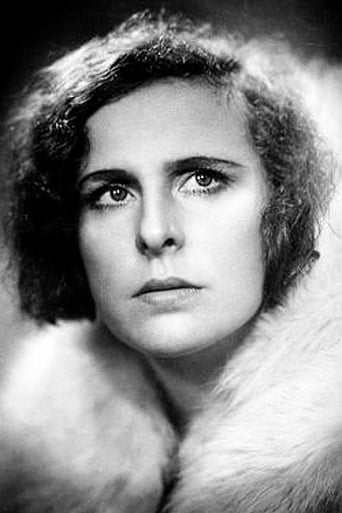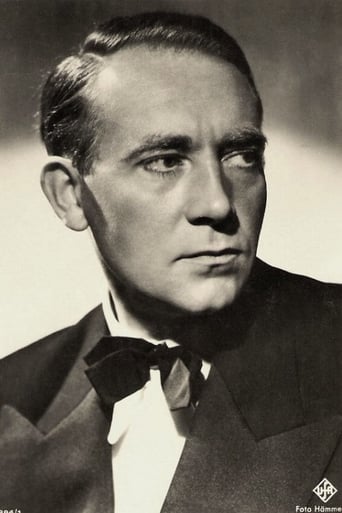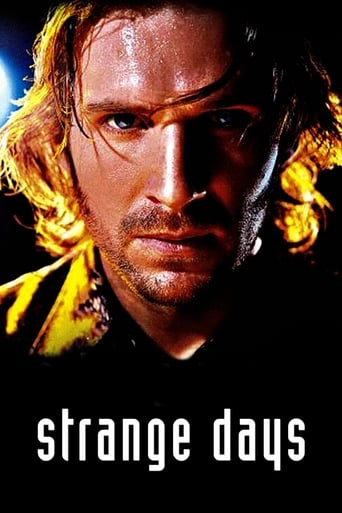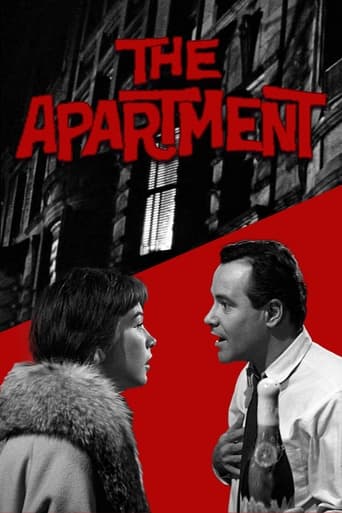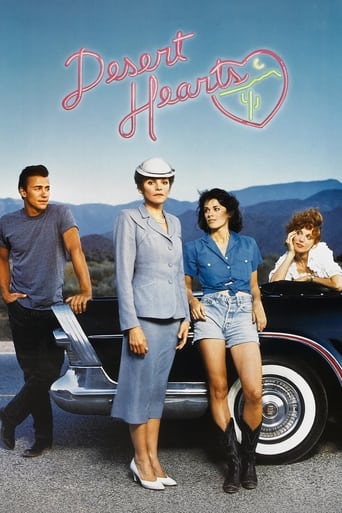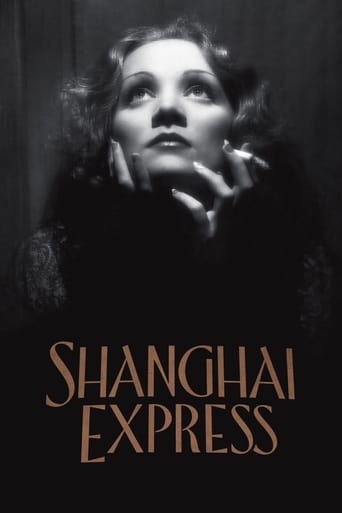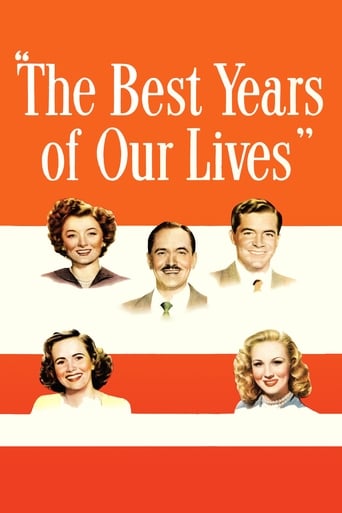
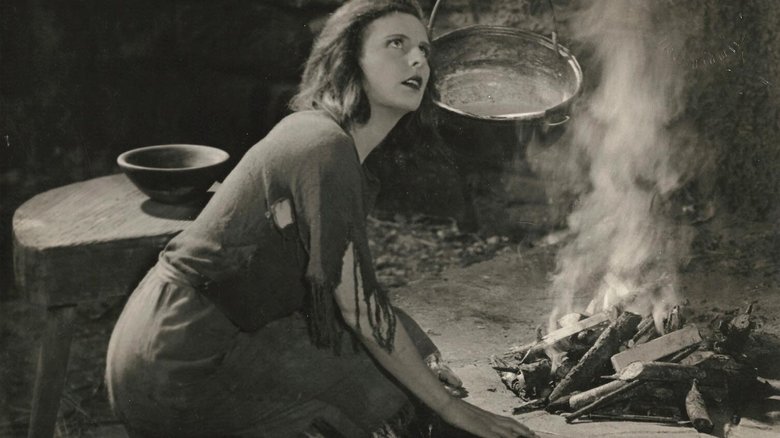
The Blue Light (1934)
A young woman, Junta, lives apart from her village and, for her solitude and strangeness, is considered to be a witch; when she comes to the village for one reason or another, the townsfolk chase her away. They feel that she may in some way be responsible for the deaths of several young men of the village, who have felt compelled, one by one, to climb the local mountain - and fall to their deaths - on nights when the moon is full.
Watch Trailer
Cast


Similar titles
Reviews
"Das blaue Licht" or "The Blue Light" is a German black-and-white film from over 80 years ago. Writer, director and lead actress is Leni Riefenstahl and this film is one of the main reasons that brought Riefenstahl the adoration of Adolf Hitler, who made her his number-1 propaganda documentary filmmaker for years to come. This one, however, was still made before the Nazi party came into power. Riefenstahl plays a woman, dishonored by society, who lives in the mountains. The men lover her though and several men go to the mountains because of her, where they die from falling in the rocky, rough landscape. However, when the main character, Junta, finally warms up to a man courting her, she is about to face the most severe form of betrayal.The reason is that this is not only a film about love and interhuman relationships, but also about trust and a huge treasure. I must say I liked the ending here. But I am not sure if it is worth waiting for 80 minutes as most of the scenes before aren't really that great or memorable. As solid as Riefenstahl's and Béla Balázs' work behind the camera is, I am not too sure if casting the filmmaker for the main character was a good choice here. She does not have the looks for being considered some sort of femme fatale. Then again, tastes differ, and were probably especially different that long ago. This is a sound film, but there is no color yet and this fact really hurts the film as you could expect with a color being included in the title even. As a whole, I do not recommend the movie. Simply not good enough.
Film at its purest form for me is a space of contemplation. Being a reflection of light and shadow it can never be the real thing of course, it is merely the mirror that holds the image - which is contrary to a lot of the myth that we have glorified around cinema as the thing in itself. A lot of those images reach our eyes randomly reflected, haphazardly, or the mirror is pointed without care. It's a pain in the ass to watch these, because you know the filmmaker doesn't mean what he sees.But sometimes, in capable hands, they reflect truly: meaning of course not that they portray the world truly, as it truly is, if we could ever get two people in the same room to agree on their experience of that room, but exactly by dint of being reflections cast from lights inside, and so like a dream is always true even as it is essentially unreal, or like the old tribal ceremonies around the world were from an outside perspective merely the primitive imitation of a scene from familiar life, but from inside the dance allowed the participant, exactly by the token of his willing submission in the shared soul, to sink himself in the level behind the familiar narrative and there purify himself with just the images; in just the same way film can penetrate beneath the dream or ceremony, by substituting for it, and purify with a glimpse of how images, life itself, are stirred into being.It is a real joy to be able to watch these films; what they offer is akin to the experience of ecstacy, introspection from outside the self. But first we have to invest ourselves in them, and the film needs to operate from the center. What we get in turn is not just the image, this is important, but an image we understand is being mirrored, this is the perspective we're missing in real life. So not an aesthetic, but a way of seeing.Look here. The story revolves around a small village at the foot of a mountain. Every fullmoon mysterious lights glint from the top and the men climb the rock to discover. Every time they fall from it - and are symbolically embodied inside the rock as small statues. But there's a woman in all this, an outcast, a pariah exactly because she can freely venture where they can't, who knows the secret pathway.The mystery is of course simple, as the man who climbs her soul to discover in turn comes to know; crystals that reflect that same moonlight seen from below. So the source of so much allure and sacrifice was merely the reflected light from the real thing that was plainly visible above their heads the whole time; and which they shied away from in fear as an evil portent of their own impotence and disaster. Oh, eventually they're allowed to get their hands on the coveted treasure, which now as well as before reflects truly upon them.But the woman, Leni Riefenstahl, casts a longer shadow in all of this, whose soul the treasure is snatched from to satisfy the social good. She illuminates deeper for this - twice herself in the film, as both actress and filmmaker - because we know now that she was surrounding herself with real darkness at the time. Of course it was never a social good her treasures gave voice to, but rather something that just had to be deemed so because society collectively pulled that way.Too many words. You just have to see how she arrays herself in this. Her face when she discovers the crystals plucked from her cave, a mask of so much anguish and heartbreak, and then imagine how many real nights she must have spent huddled behind that mask for the rest of her life following WWII.Of course for her, the character, it was always the beauty of the thing that stirred the heart. But not a beauty such as you appreciate in an art gallery or read from a book. Beauty that makes the body stir from sleep and by some intuitive pull is drawn to climb the steep rock - and the discovery of the path, no doubt, was also intuitive - for a fleeting glimpse of what?But of course emptiness in full bloom. Wonderful bloom.I suggest you see this with the sound muted - it's poorly integrated inside the film - and music of your choice like you would watch a silent. It's a magical film of interior landscapes.
How astonishing can it be to see how a fictional story can metaphorically translate the life of someone? Even more when it is that very person the one who invents the story of her destiny? This film has to be the answer.Here we have a genius of composition and visual rhythm, in her first attempt, which guesses everything that would come.What would this goddess (in several meanings) be thinking, when she embraced this adventure? Lenni was a student of the human body, and therefore, of her own. Student of the Hellenic harmonic dynamics, who understood the power of movement, applied to cinema. She understood it so well she would pay for her whole life for that. In this film she is, simultaneously, observer and observed object. She, the body, is one of the reasons for this film to be. At the same time, we have a story about a "special" woman. She is special because she has access to a secret, she knows a path. That secret has a geographical identity, there is a division between sacred and mundane, mountain and city. The preciousness, surrounded by an aura of inaccessibility, to reach it is a privilege of beauty, of commitment and in the end, of love. And Lenni is at the centre of that sacredness, and there at the moment when it breaks. And she is doomed to be rejected forever for keeping such a secret. That's Junta, as it is Lenni. That's the prophecy, this story, written by Riefenstahl, which is a story even inside the film, a book with her photo on the cover! This woman changed more than the history of cinema, she did more than to enlarge the possibilities of visual contemplation and, consequently, beauty concepts. In her coursed work (coursed because it is good!) she helped to change the face of the world, having her as the ambiguous element, always. In this film we have her, linking the sacred mountain and the city, linking two worlds. Now check the geography of the place. The mountain, the power of its various sequences, the strength of that geographical object. The woman, climbing the mountain, the power of contrast. Junta, under the effect of the full moon, exhales sensuality, which works still today (when we are totally addicted to images that aim at sensuality). It works because it's genuine, a woman who is more that it seems. Note how the sweater reveals the shoulder, a provocation no doubt, a desire to place the body at the centre, and to enhance Man in relation with Nature.In this metaphorical mythology, Germanic and Nordic, see how the symbols are materialized, and shot. The composition of the shots of mountain climbing and specially, of Vigo getting into the sacred crystal area is genius, the set of a potential Valhala, and the expression of Junta as she finds out about the intrusion reveals everything.This film still obeys too much to the codes of silent film. I saw the sound version, but apparently there is a silent one, since in those days the transition was still being made. Anyway, the sound in this film is uncomfortably placed, and dialogue does little more than directly replace the inter titles of the silent. And the montage still doesn't exist with the supreme sense that Lenni would give it, years later, and that affects rhythm, because the work of the montage masters (Eisenstein, Kalatzov, Vertov...) totally depends on the rhythm images themselves can give, for what happens inside every shot, and for the cut between shots. That dynamic does not exist here, and the codes are dated, and i suppose they might already be dated than. But Riefenstahl is body, face, she is expression. She is movement, dynamic, rhythm. But is all that both as an observer, sensitive and visual, and as an interpreter, sensual (sexual!) and intense. That's her genius, here.My opinion: 4/5 see this, several times.http://www.7eyes.wordpress.com
`Das blaue Licht' (The Blue Light) tells the legend of Junta, a strange woman living in the Alpine heights above a Tyrolean village, who has privileged access to a cave of crystals. On full-moon nights a blue light emanates from this secret grotto, luring young men from the valley to seek out the force of the radiant beam. Their quest invariably end in death and causes the towns-people to vilify junta. A painter from Vienna, Vigo, befriends the outcast woman. He becomes her protector and falls in love with her. Following her one blue-lit night, he discovers the way to the cave. He draws a map, thinking that the safe passage to the grotto will serve the best interest of both Junta and the villagers. The towns-people arm themselves with tools and climb to the cave, plundering the valuable crystals and celebrating their new found fortune.Riefenstahl's film -(fantasy) sanctifies nature and reflects a fascination with beauty and harmony. The photography of this picture is visually stunning, and Riefenstahl's masculine beauty and physical abilities make her the perfect choice for the role of Junta. `Das blaue Licht' is one of the last great Weimar films and a must see' not only for movie buffs.


